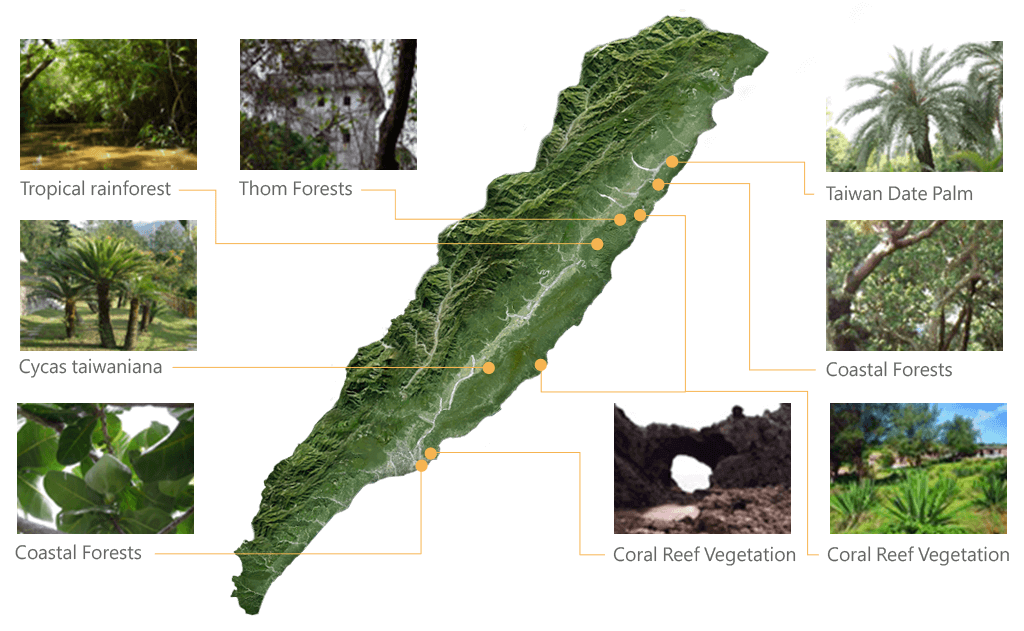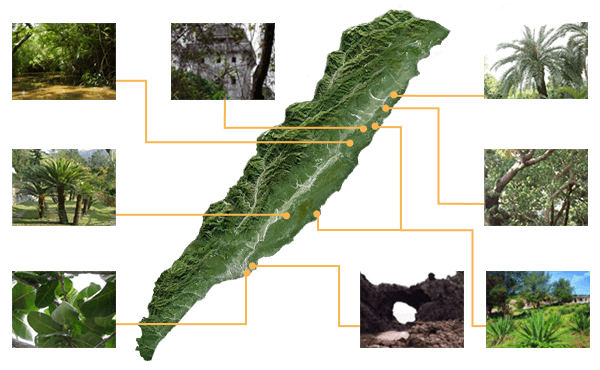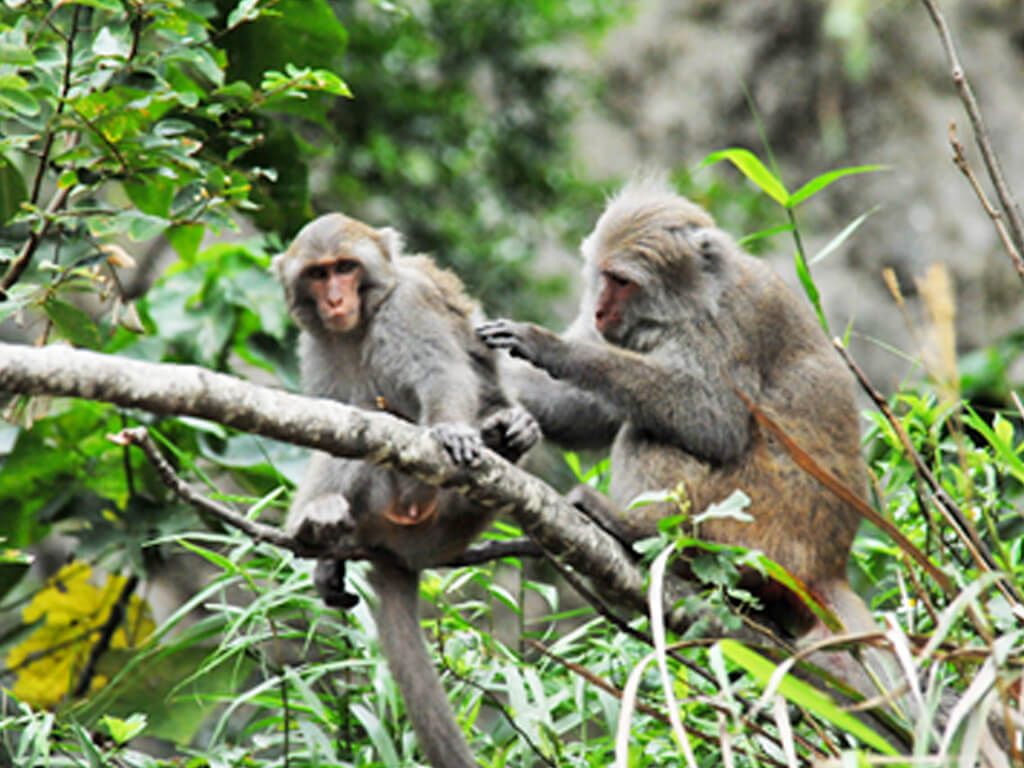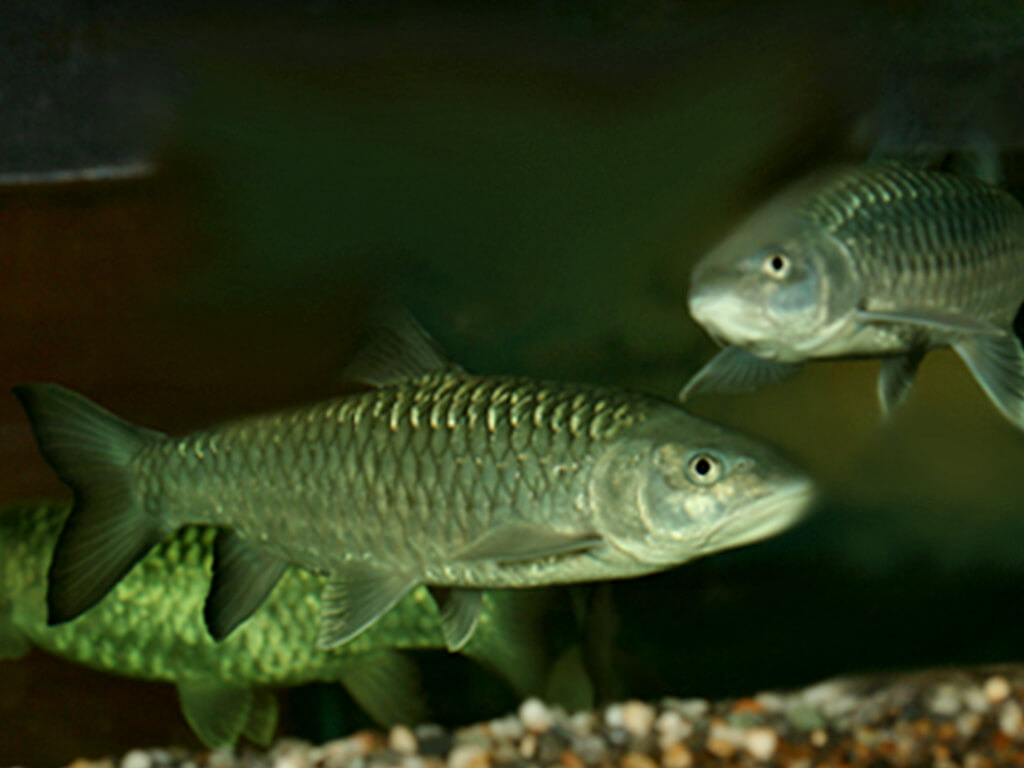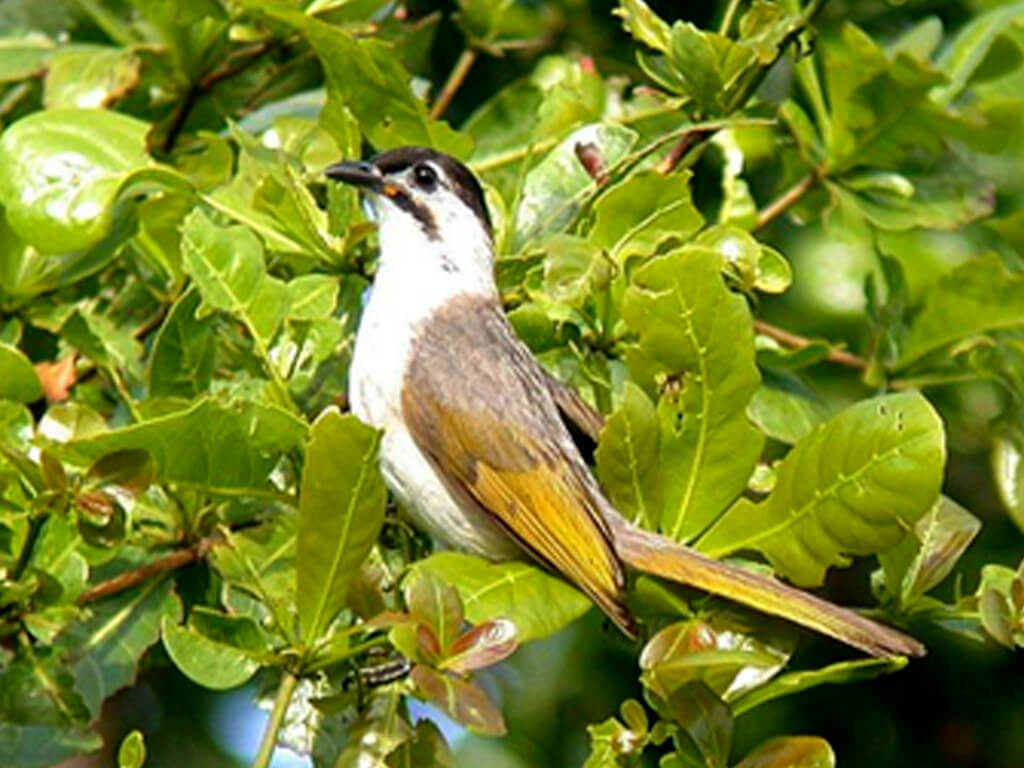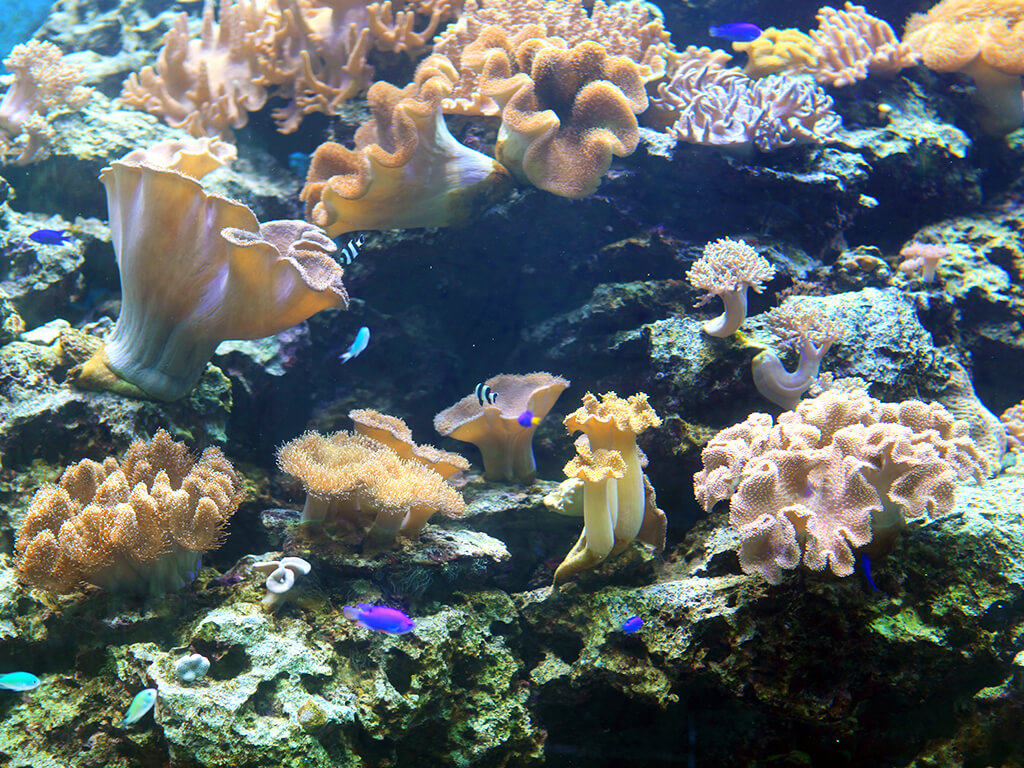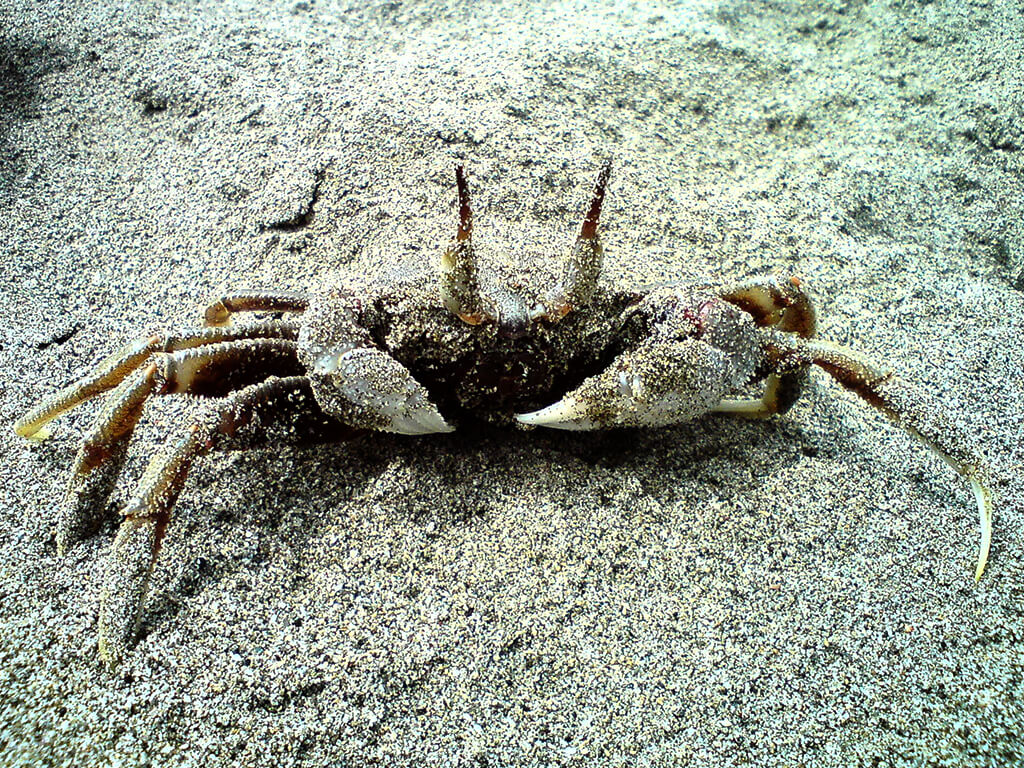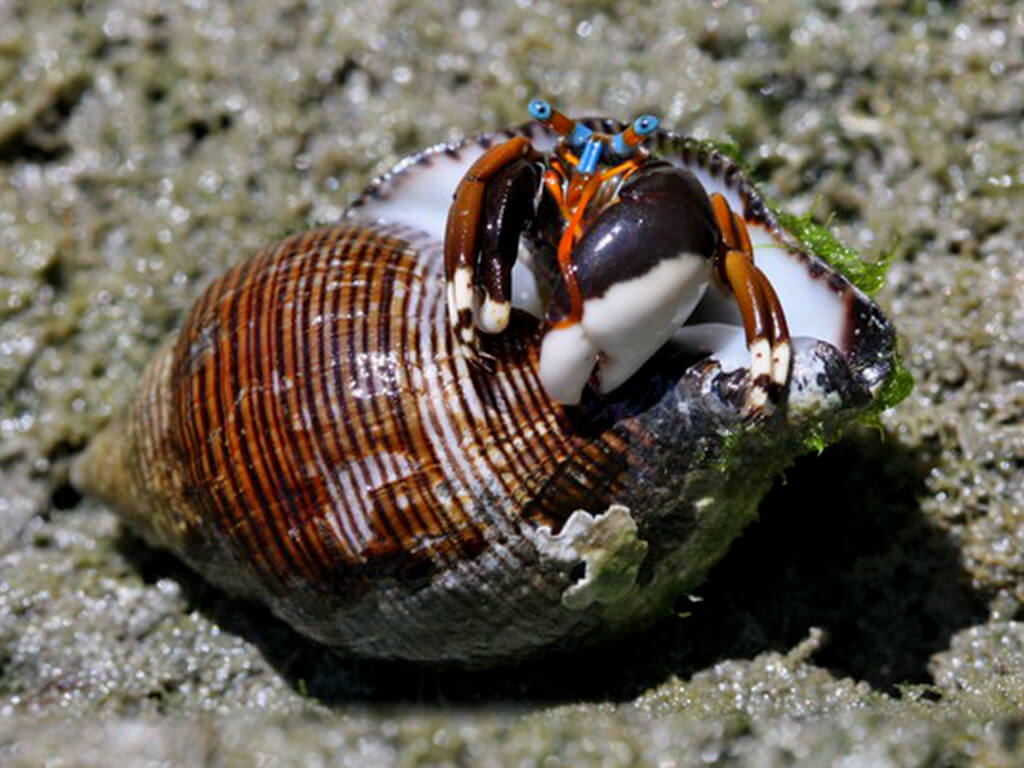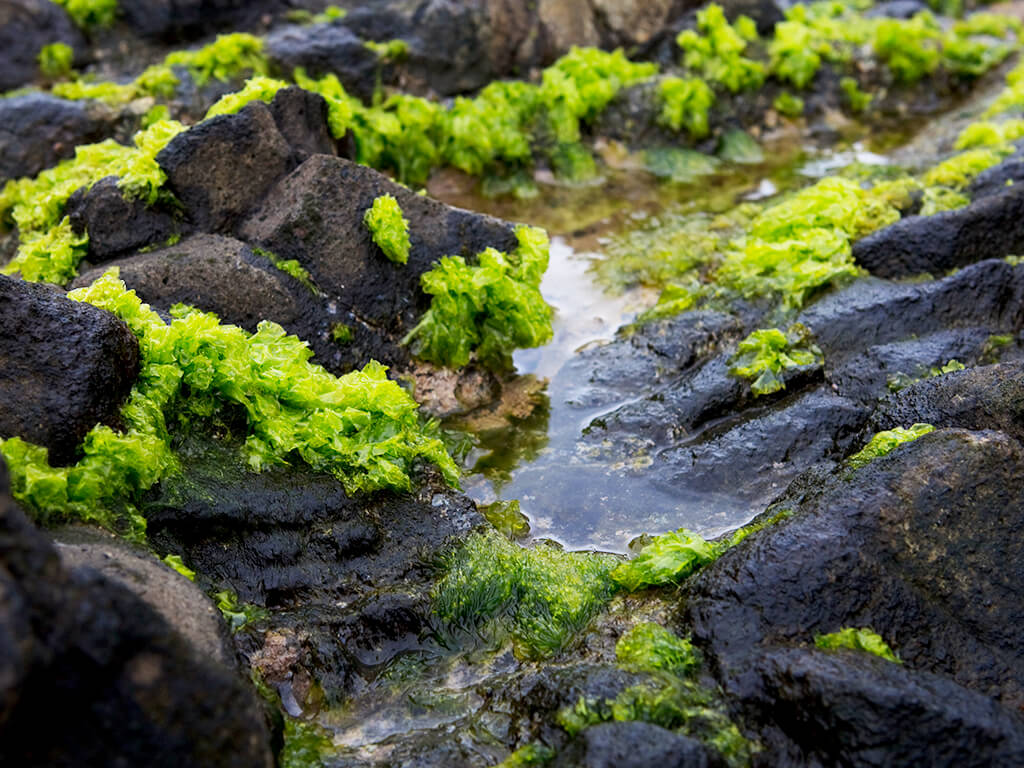Vegetation
A Well-Preserved Vegetation
The East Coast has various vegetation zones, ranging from sub-arctic mountains over 3000 meters above sea level to tropical coasts. These zones include coniferous forests, coniferous broad-leaved mixed forests, deciduous forests, tropical rainforests, coastal forests, and other coastal flora. They encompass almost all types of plants. The tropical rainforest on both sides of the Xiuguluan River, the thorn forests of Xibulan Island, and the coral reef vegetation of Shitiping, Sanxiantai, and Little Yeliu are all precious ecological landscapes. Among them, the Xiuguluan River tropical rainforest has been relatively well-preserved and is especially valuable because it is the only remaining tropical rainforest in Taiwan, aside from Wulai, Hengchun, and Orchid Island.
Read More
Animals
Home to Many Wild Animals
Mammals
The less-developed eastern Taiwan has a complex habitat for wildlife, making it home to much of Taiwan's diverse fauna. According to a recent survey, there are more than 20 species of mammals found on the East Coast. Among them, six are unique to Taiwan, including the Taiwan macaque, the small yellow-bellied mouse, and the Zijian mouse. Taiwan macaques are particularly representative of Taiwanese wildlife and are easily observable. The Taiyuan River valley in Taitung is a well-known habitat for Taiwan macaques, where groups of these primates can often be seen, especially during nocturnal feeding time.
Fish
Several fish species are endemic to Taiwan, such as the tall-bodied shovel-jaw fish, ho-spine fish, and Kikuchi's small carp. Each year, from March to August, a remarkable fish migration occurs in the Xiuguluan River. This event rivals the famous salmon runs in temperate zones and is considered one of the world's premier subtropical river migrations. Millions of fish swim from the Pacific Ocean into the Xiuguluan River during spring, creating a fantastic spectacle.
Birds
The East Coast boasts nearly 150 bird species, making it a true paradise for bird-watchers. With abundant bird resources and relatively undisturbed landscapes, the Wild Bird Association of Taiwan has carefully planned thirteen bird-watching routes. Along the Xiuguluan River and the Ma Wu Cave Creek Valley, bird enthusiasts can observe both migratory and resident birds, as well as various different species. One bird that most represents the area is an endemic species of Taiwan — the Black-headed Bulbul, which can only be found on the east coast of Taiwan and in Hengchun. The black-headed and white-headed Bulbul found on the west coast of Taiwan demonstrates a wonderful example of geographical segregation.
Coastal Ecosystems
The Diversity of Coastal Life, Eco-Tourism
Coastal wildlife refers to all life that thrives in the intertidal zone along the coast. These creatures have developed different shapes and structures over the course of evolution to adapt to the dramatic habitat changes during low tide. The abundant variety of species on the coast creates a colorful world of seashores. The East Coast features diverse coastal landscapes, including river mouths, sandy beaches, gravel beaches, reefs, and other coastal terrains, which harbor a great number of diverse creatures. According to surveys, there are more than 50 large-scale algae species, over 140 kinds of shellfish, more than 60 types of coral, more than 130 intertidal fish, and hundreds of other crustaceans, polychaetes, and echinoderms. Coral forests around Green Island, Shitiping, Sanxiantai, and Fugang Geopark (Xiaoyeliu) attract various tropical fish and a wide variety of invertebrates, making these areas a paradise for diving. Notably, Green Island hosts more than 220 different coral species, a level of diversityunmatched by similar islands worldwide.
Sandy Coastline
The sandy coastline in the area is steep, and the sediment is unstable, resulting in a relatively narrow intertidal zone. Only a few animals can survive and live in these areas. The creatures that inhabit the sandy shores are usually hidden and difficult to find. Animals such as sand crabs live in caves near the high tide line. They emerge to feed at night, displaying agility as they dig holes in the sand, resulting in tiny sand balls. These formations resemble pebbles and serve as feeding grounds when waves roll in. Bivalves are also commonly found in the sand; they have gills and rely on water plankton for sustenance.
Gravel Coastline
The gravel along the coast is constantly washed by waves, causing it to roll perpetually. Due to wave action, the gravel often changes shape as it accumulates. Gravel is generally not a suitable environment for settling creatures. Animals found on rolling gravel have developed special survival skills. For instance, brittle stars will intentionally detach their brachiopods to escape dangerous situations between moving rocks. Hermit crabs utilize their hard, spiral shells for protection, while shrimp and stone crabs may lose limbs during molting but can regenerate them.
Reefs
Reefs often contain numerous holes, providing an excellent habitat for marine animals. The diversity of species within reefs is abundant. Some large algae exhibit greater tolerance to drought and can survive in drier areas near the high tide line. These algae absorb ocean calcium, depositing it in their bodies to enhance hardness and resist strong currents. They also reduce their organic matter content to avoid becoming prey for other animals. These resilient algae share similarities with cacti. Animals living near the high tide line possess stronger adsorption abilities, allowing them to withstand water shocks and predators. For example, consider the corn spiral shell.
